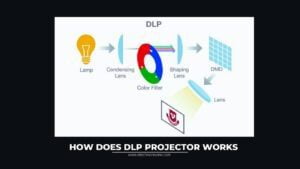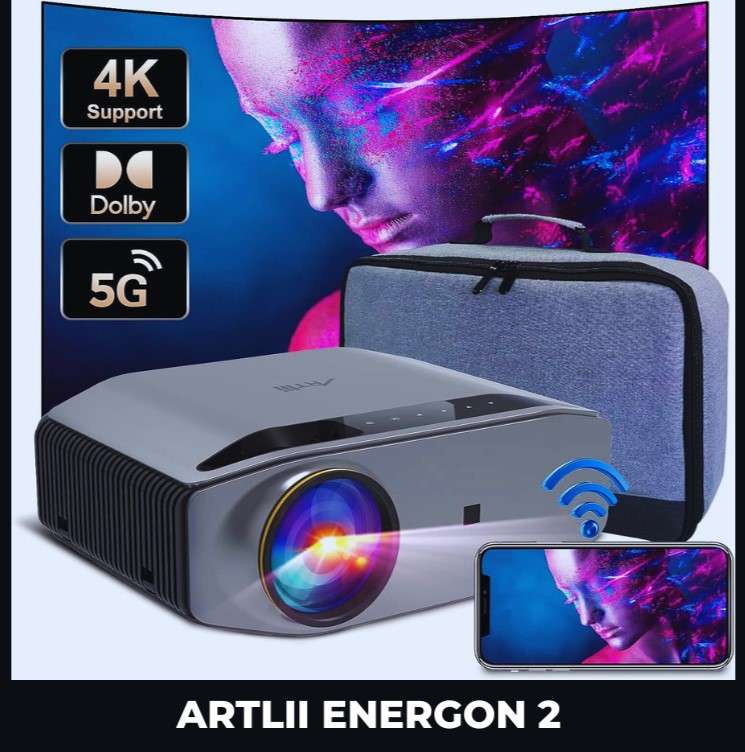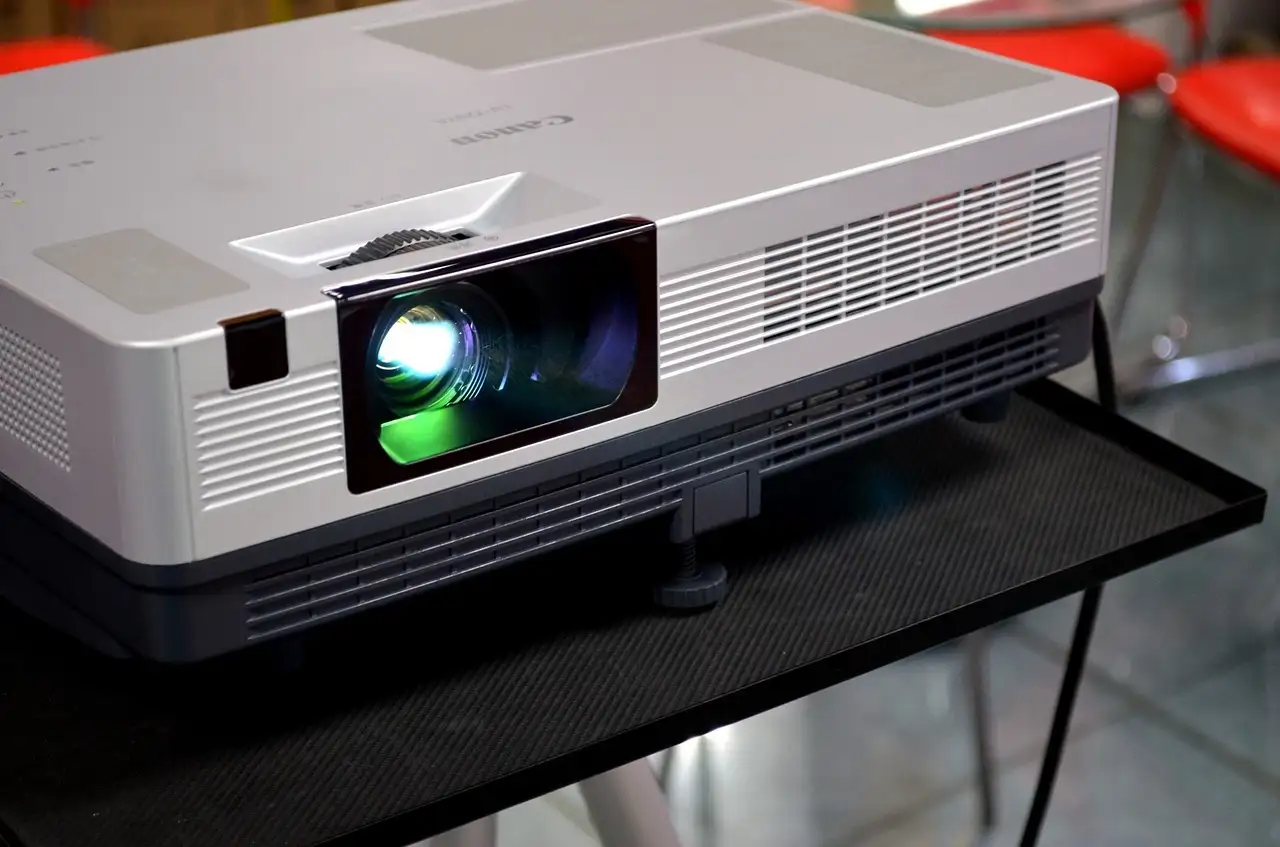Have you ever found yourself marveling at the grand visuals on the big screen at the cinema or the dazzling presentations during a business conference and wondered, “How does a projector work?” This article is your gateway to understanding the intriguing and intricate world of projectors.
Projector: A Bit of History
Let’s briefly travel down memory lane before diving into the details of projectors. The story of projectors isn’t just a recent affair, they’ve been around for centuries, evolving continually. The inception dates back to the ‘magic lanterns’ of the 17th century, which used rudimentary optics and light sources to project images on walls. Modern projectors have come a long way since then, leveraging cutting-edge technologies to present images in high-definition formats. Nowadays, from educational institutions to high-profile business meetings, projectors have become an indispensable tool in our everyday lives.
How Does a Projector Work?
To put it simply, a projector works by emitting a beam of light through a small transparent lens. This light is shaped into an image by various methods, depending on the type of projector, and then enlarged onto a projection screen. But the real magic is in the details, and that’s precisely what we’re going to look at today.
Light Source: The Heart of the Projector
At the core of any projector’s operation lies the principle of light projection. By understanding this foundation, we can better appreciate the intricacies of how projectors work. A projector essentially creates an image by manipulating light waves. Projector’s light source can be a lamp, LED, or laser. A lamp-based projector is the traditional choice, but LED and laser projectors are rapidly gaining popularity due to their long lifespan and power efficiency.
Projector Lenses and Optics
The device uses a powerful light source and an intricate system of mirrors, lenses, and panels to project an image onto a screen. The lens is responsible for focusing the light and projecting the image onto a screen. Different lenses cater to various projection distances and screen sizes. The complexity of the device lies in how it manages the light it produces.
Types of Projectors
Today’s projector industry offers a wide variety of models. Each employs a different method to produce an image. The three main types are:
1. DLP (Digital Light Processing),
2. LCD (Liquid Crystal Display), and
3. LCoS (Liquid Crystal on Silicon).
How Does a DLP Projector Work?
DLP projectors utilize a DMD (Digital Micro-mirror Device) chip with millions of tiny mirrors. Each mirror represents one pixel. The chip tilts these mirrors to reflect light through the projector’s lens or away from it to form images.

How Does an LCD Projector Work?
LCD projectors create images using three liquid crystal panels, each responsible for one of the primary colors – red, green, and blue. Light from a lamp passes through these panels where individual pixels open or close to form the image.

How Does an LCoS Projector Work?
LCoS projectors combine the best of both DLP and LCD technologies. They use liquid crystals over a silicon-based layer but reflect the light instead of letting it pass through, resulting in high-quality images.

How Projectors Handle Color
Projectors create different colors by combining different intensities of red, green, and blue light – a principle known as additive color mixing.
Image Projection Mechanism
After the color processing stage, the light beam travels toward the lens. It then focuses the light onto a screen, projecting the image. The ability to adjust the focus and zoom capabilities of the lens allows the image size and sharpness to be modified.
Projector Resolutions
There are projectors with resolutions ranging from XGA and WXGA to Full HD, 4K, and even 8K. The projected image will be more detailed a greater resolution.
Understanding Aspect Ratio
The width-to-height ratio of the projected image is known as the aspect ratio. Common aspect ratios include 4:3 for standard definition, 16:9 for high definition, and 21:9 for widescreen cinema.
Why is Contrast Ratio Important?
The difference between the deepest black and the brightest white that a projector is capable of producing is known as the contrast ratio. A high contrast ratio results in a more detailed image, especially in dark scenes.
The Role of Brightness in Projectors
Measured in lumens, the brightness of a projector determines how well you can see the projected image in various lighting conditions. High lumens are recommended for rooms with lots of ambient light.
Projection Screens
The choice of projection screen can significantly impact image quality. Various factors come into play, including screen size, color, material, and gain.
Common Projector Features
Modern projectors come equipped with a multitude of features like keystone correction, lens shift, zoom function, and built-in speakers, to name a few.
Connecting Your Projector
Connecting your projector might involve HDMI, VGA, DVI, or USB, depending on the source device. Wireless connectivity options are also becoming increasingly prevalent.
And that’s a wrap! Now that we’ve unveiled the secret behind “How does a projector work”, the magic of projectors should no longer be a mystery. The next time you see something on a big screen, you’ll enjoy both the sights and the technology that made them possible.
FAQs
Q: How does a projector work?
A: A projector works by emitting light through a small lens, forming and enlarging an image onto a projection screen.
Q: What are the types of projectors?
A: The main types are DLP, LCD, and LCoS projectors.
Q: What is the light source in a projector?
A: The light source can be a lamp, LED, or laser.
Q: What does the contrast ratio in a projector mean?
A: The contrast ratio is the difference between the darkest black and the brightest white a projector can produce.
Q: What is the importance of brightness in projectors?
A: Brightness, measured in lumens, determines the visibility of the projected image in various lighting conditions.
Q: What are the common features of modern projectors?
A: Modern projectors offer features like keystone correction, lens shift, zoom function, and built-in speakers.







Leave a Reply